|
Explanation: As we
humans spread far and wide across the globe, we seem to excel at altering the
face of the land to meet our needs and interests. This week, we explore
one facet of this: homogenization of the landscape ... in particular,
from conversion of land cover conditions to croplands, agriculture, and
habitations. If
I hadn't labeled each photo in this week's episode, one may be hard-pressed to
recognize the country, or continent.
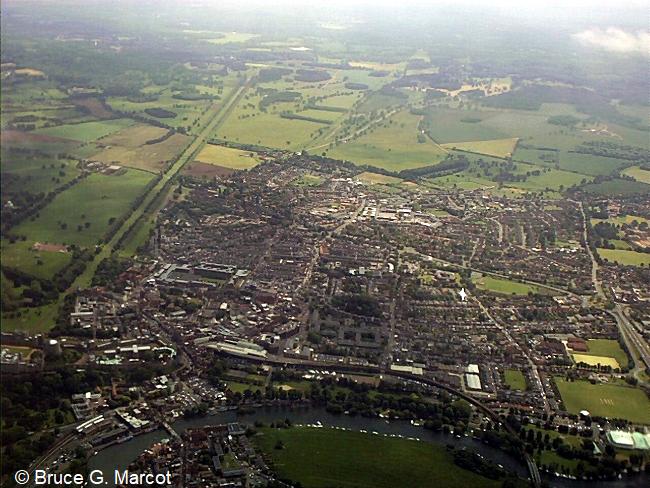
Town and pasturelands of southern England.
Retention of hedgerows among pastures, as seen in this photo,
can help retain some habitat for more common wildlife species.
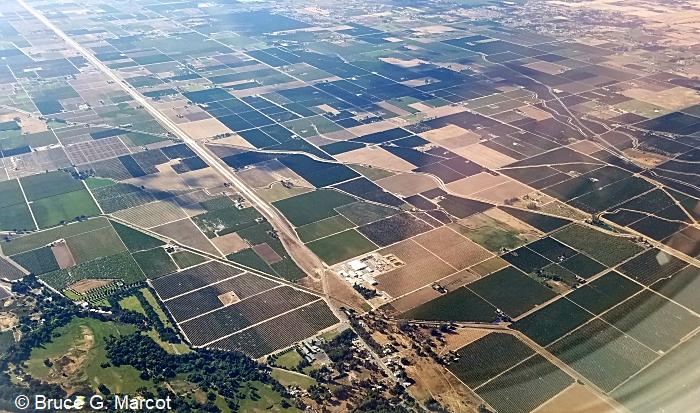
Central Valley, California.
Compare this image with the one above in England;
Much of the Central Valley lacks hedgerows and windrows.
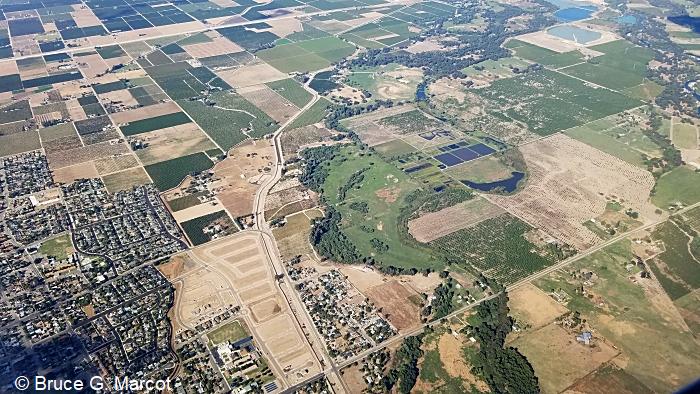
Central Valley, California, showing a residual
riverine green area, now adjacent to a channelized waterway.
The biodiversity, ecosystem services, and ecological functions
of the original river floodplain have been largely lost in this landscape.
This selected set of
aerial views points out the simplification and homogenization of
landscapes resulting from our intensive occupation and conversion of natural
conditions. This, in turn, results in what I will call the
simplification and homogenization of biodiversity. Just like towns and
cities (at least in the U.S.) seem to be becoming more alike everywhere, with
strip malls, avenues, freeways, urban hubs and suburban sprawl, so too are
hinterlands becoming homogenous as ancient forests are cleared, wetlands are
drained, floodplains are tamed, and waterways are channelized.
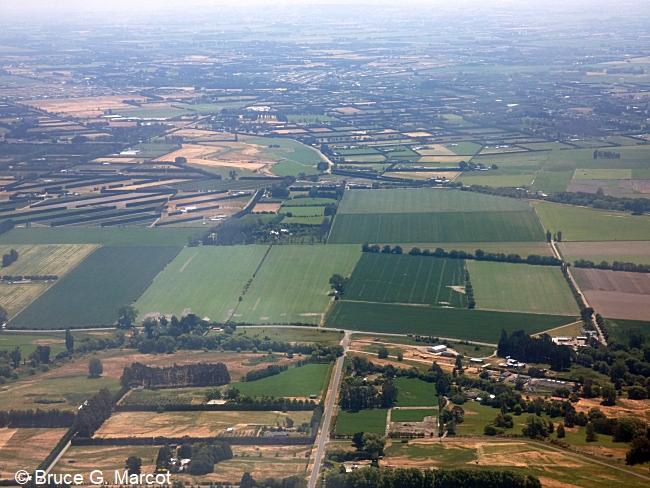
The highly manicured and tamed croplands and pastures of
North Island, New Zealand.
At least here, hedgerows and windrows of trees have been
retained across farm and pasture plots,
although the narrow, linear nature of these vegetation
strips hardly replace the functions of the original forests.
The result is that biodiversity -- especially the variety of plants and
wildlife -- is greatly reduced, and starts to look the same everywhere, with
the spread of invasive species and elimination of habitat
specialists.
For
example, the fate and value of English woodlands, which may be at risk from
extensive clearing for pasturelands and croplands, were wonderfully recounted
by Shepherd (2020).
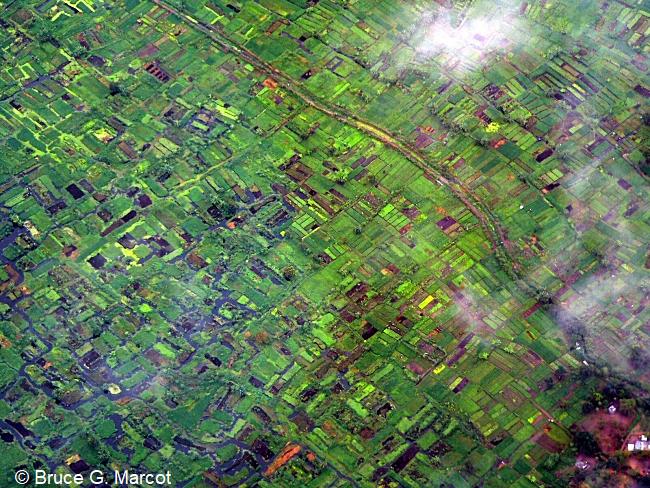
The incredibly complex, converted landscape of western
Democratic Republic of the Congo, in tropical central Africa.
The individual agricultural plots here are tiny as compared to the industrial
farming landscapes of California, but the overall
impact is pretty much the same.
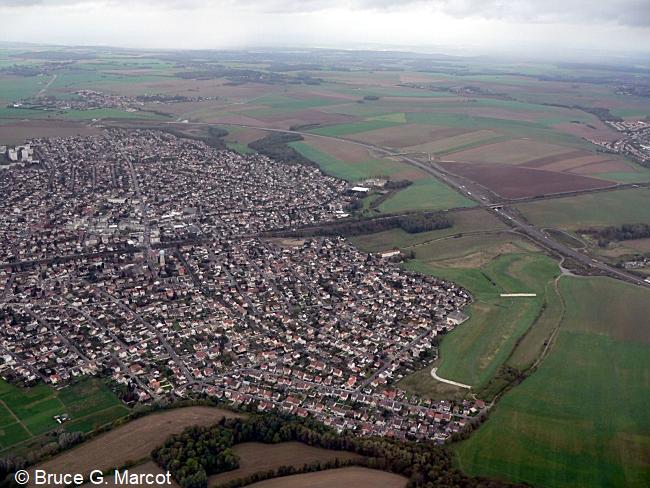
Typical scene north of Paris, France, where towns abut
broad agricultural vistas.
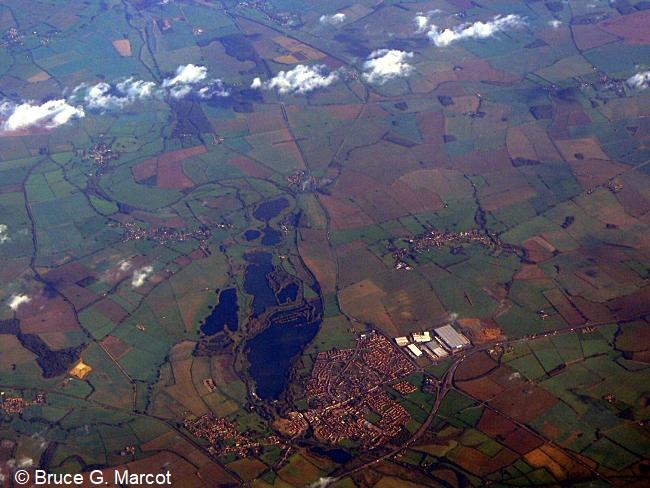
Across central England, most, if not all, of the original
land cover is long converted. We can only guess which, and how many,
species of plants, invertebrates, and wildlife have become
locally or regionally extirpated from such conversion.
Of course, sites for
agriculture, pastureland, and cropland can vary, also as shown in this week's
photo series, depending on local soil type, traditional use, kinds of crops
planted, topography, climate, and other factors. But the main point is
how the original conditions of forest, riparian, grassland, steppe, and other
ecosystems have become tamed and modified to simpler conditions.
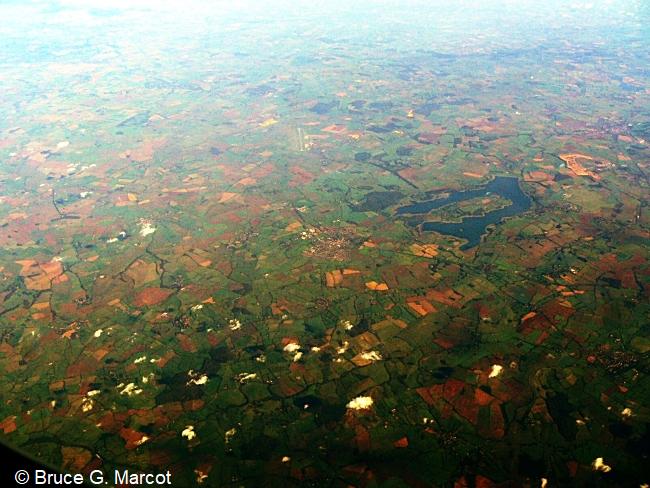
Central Ohio farmlands, USA,
appearing like the English countryside, above.
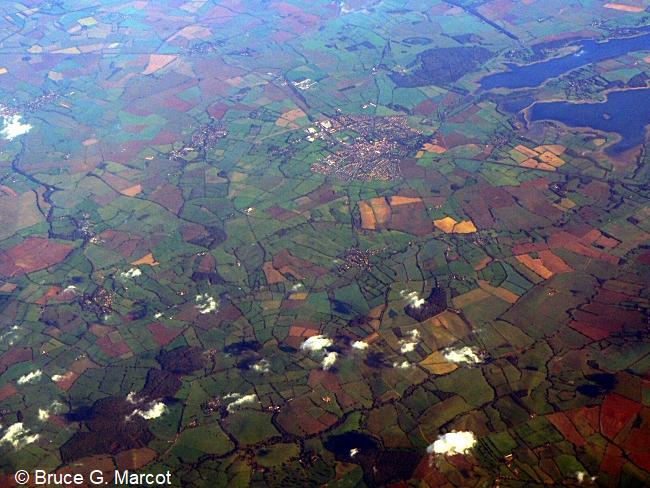
Another view of the Ohio farmlands.
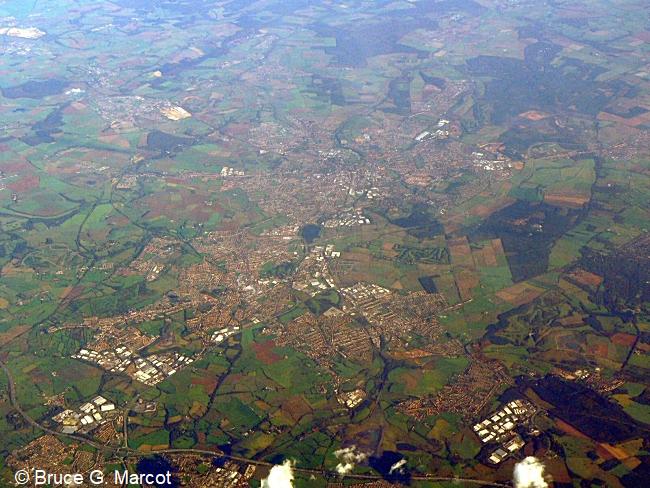
Ohio farmlands, with towns concentrated among
sprawling farmlands, appearing much like the French countyside.
Simplifying landscapes often results in reduction and loss of biodiversity by
reducing eliminating an ecosystem's capacity to absorb disturbances.
Intensive agricultural conversion of the land can have a key impact on such
capacity (Gámez-Virués et al. 2015).
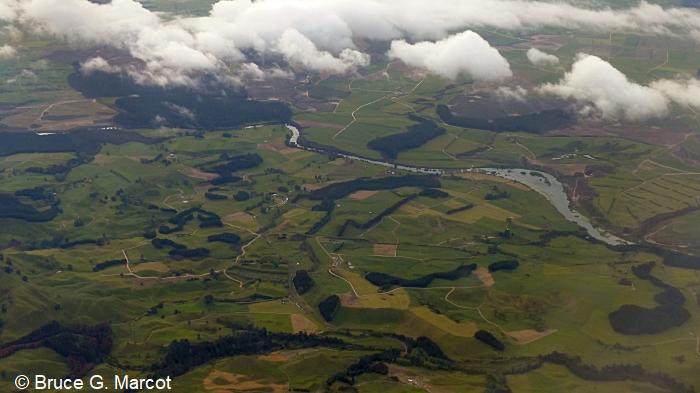
North Island, New Zealand, with patches of semi-natural
woodlands that help retain habitat for more common wildlife species.
However, these patches are highly fragmented
across the landscape, and thus serve poorly especially for
species specialized in occupying, and
needing connectivity of, the tree canopies.
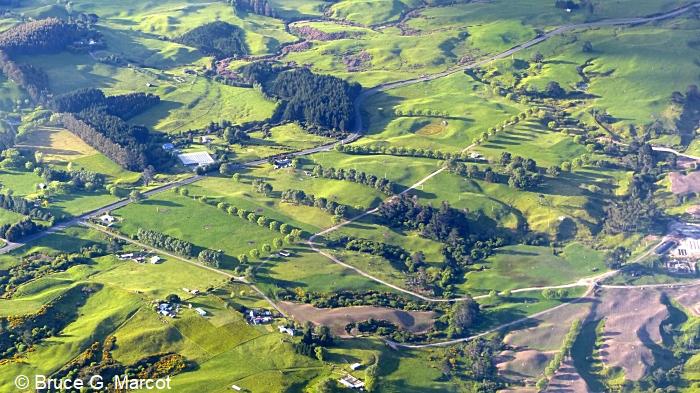
Another view of North Island, New Zealand, emphasizing
the windrows between pasture plots, and the
scant forest cover remaining.
Among other effects of
homogenization, simplifying ecological conditions of a landscape can result in
loss of ecosystem services including biological pest control.
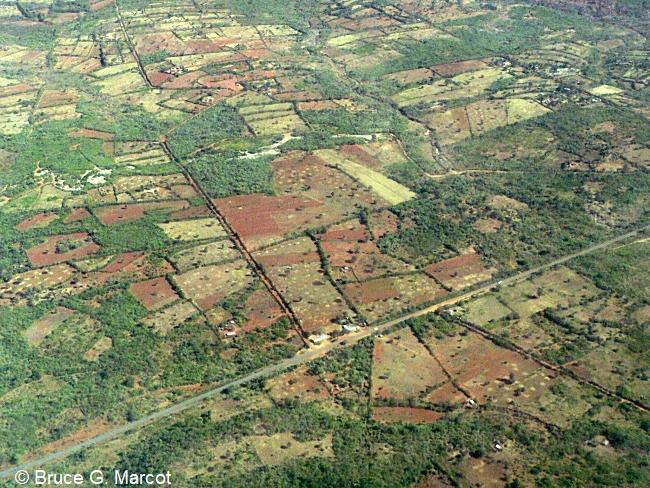
Here is a somewhat chaotic crowding of
pastures and crop fields in the Rift Valley of southern Kenya,
eastern Africa. Patches of trees occupy a bit more of the
landscape here than in other sites visited in this week's photo series.
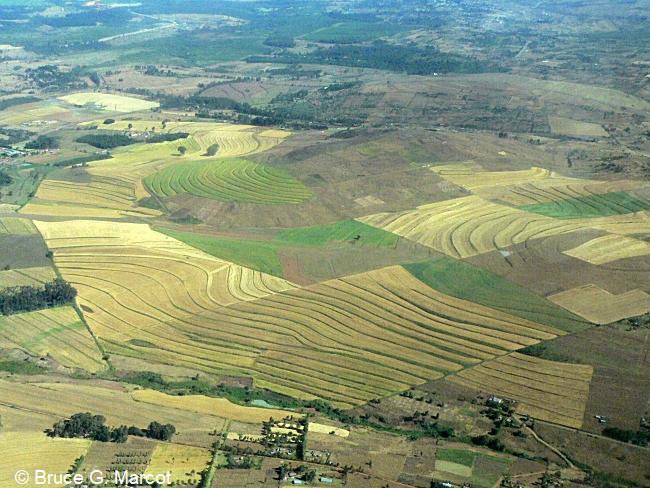
And a very different agricultural landscape, here
also in southern Kenya. Clearly, farm machinery is at play here,
forming the contouring of agricultural stips across the landscape
in relatively square patches. There is little native
biodiversity retained in such a landscape.
Rusch
et al. (2016) reported finding that average pest control in simple landscapes
of cultivations is nearly half (46%) that of natural landscapes. And
natural biological pest control can be a major boon to agriculture and crop
production, so its reduction could cut production significantly.
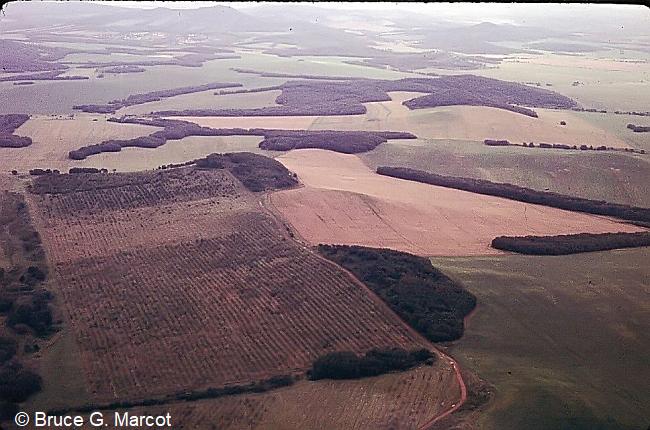
And finally, the broad farm fields of the Russian Far East in
Primorski Krai. The large forest patches here are somewhat
better connected across this landscape.
Information:
Gámez-Virués, S., D. J. Perovic, M. M. Gossner,
and 16_others. 2015. Landscape simplification filters species traits and
drives biotic homogenization. Nature Communications 6:art. no. 8568.
Grab, H., B. Danforth, K. Poveda, and G. Loeb.
2018. Landscape simplification reduces classical biological control and
crop yield. Ecological Applications 28(2):348-355.
Rusch, A., R. Chaplin-Kramer, M. M. Gardiner, V.
Hawro, J. Holland, D. Landis, C. Thies, T. Tscharntke, W. W. Weisser, C.
Winqvist, M. Woltz, and R. Bommarco. 2016. Agricultural landscape
simplification reduces natural pest control: A quantitative synthesis.
Agriculture, Ecosystems and Environment 221:198-204.
Shepherd, M. 2020. England's ancient woodlands:
living time capsules. Wings Fall:16-22.
|
Index |
Location | Search | About EPOW | ... Next >
Google Earth locations